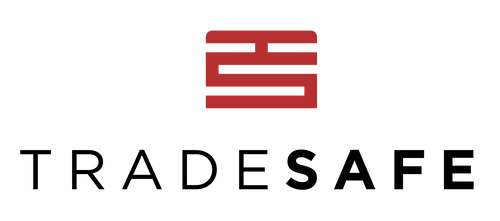
La seguridad dentro de la industria pesada y el sector manufacturero es algo que debe tomarse en serio, gestionar los riesgos y resolver los problemas de forma rápida y eficaz. La tecnología está desempeñando ahora un papel más importante que nunca en esto, y en los últimos dos años hemos visto el auge de la IA como algo que podría desempeñar un papel cada vez más importante en la forma en que se gestiona todo.
Contamos con algunos expertos para que nos den su opinión sobre tecnología, seguridad e IA en el sector. Aquí están sus pensamientos.
¿Cuáles son los principales tipos de accidentes asociados con las instalaciones de fabricación?
“Resbalones, tropezones y caídas, exposición eléctrica, caída de objetos, lesiones por estrés, quemaduras o reacciones químicas, esfuerzo excesivo, levantamiento peligroso, fatiga o deshidratación, lesiones relacionadas con máquinas y accidentes automovilísticos.
Muchos de estos peligros a menudo resultan en interrupciones de la producción, períodos prolongados de baja, enfermedades, lesiones graves a largo plazo o incluso la muerte de los empleados.
Teniendo esto en cuenta, es fundamental comprender algunos de los peligros de seguridad más comunes que existen en las plantas de fabricación para poder tomar medidas para evitar que ocurran”. "Dakota Murphey escribiendo para SHPonline ".
¿Qué mejoras puede aportar la introducción de tecnología en los sectores manufacturero y de industria pesada?
“La seguridad es fundamental en las instalaciones de fabricación: protege a los trabajadores de daños, garantiza el cumplimiento de las regulaciones legales, reduce los costos, protege los equipos y productos y genera confianza en los empleados.
Las innovaciones tecnológicas (como la tecnología portátil, los drones y los robots, las aplicaciones de seguridad y la realidad virtual) desempeñan un papel importante en la mejora de la seguridad de las instalaciones. Al aprovecharlos, las instalaciones de fabricación reducen el riesgo de error humano y mejoran la eficiencia y la calidad generales. Sin embargo, la tecnología no es una panacea y debe usarse junto con otras medidas de control de calidad y mejores prácticas”, escribe Bryan Christiansen para The Safety Mag .
¿Cómo ha mejorado la tecnología como la IA la seguridad en la industria pesada?
Algunos procesos son naturalmente más inseguros que otros, y la mejor manera de reducir el riesgo de accidentes y lesiones es eliminar el elemento humano y volver a centrarse en cómo ejecutar mejor estas operaciones. Ingrese la automatización y la robótica.
"La tecnología ha ayudado a ciertas máquinas en su capacidad de funcionar independientemente de la interacción humana, gracias a la inteligencia artificial (IA) que es programable por ingenieros o robots especialmente diseñados que realizan estas prácticas peligrosas ellos mismos", dijo Cilliers.
“Una encuesta realizada por Guidance Automation encontró que el 73% de las empresas de fabricación creían que la automatización es uno de los factores clave para el progreso de la industria. Esto no se limita únicamente a la salud y la seguridad, sino a una mayor racionalización de los procesos para hacer las cosas más eficientes”. Johann Cilliers, director de marketing del grupo en Welding Alloys, habla con Manufacturing Digital .
La integración de la tecnología, en particular la inteligencia artificial (IA), en la industria pesada y el sector manufacturero representa un avance fundamental para garantizar la seguridad y la eficiencia. Complementa las medidas de seguridad y las mejores prácticas existentes, permitiendo a las instalaciones de fabricación mitigar riesgos, proteger a los empleados y mantener el cumplimiento normativo.
Como resultado, el sector está preparado para una mayor productividad, mejores registros de seguridad y una mayor eficiencia operativa, lo que marca un paso crucial hacia adelante en la búsqueda de lugares de trabajo más seguros y procesos de fabricación más resilientes. Adoptar estos avances tecnológicos con el compromiso de mejorar continuamente será la piedra angular del progreso en los próximos años.
